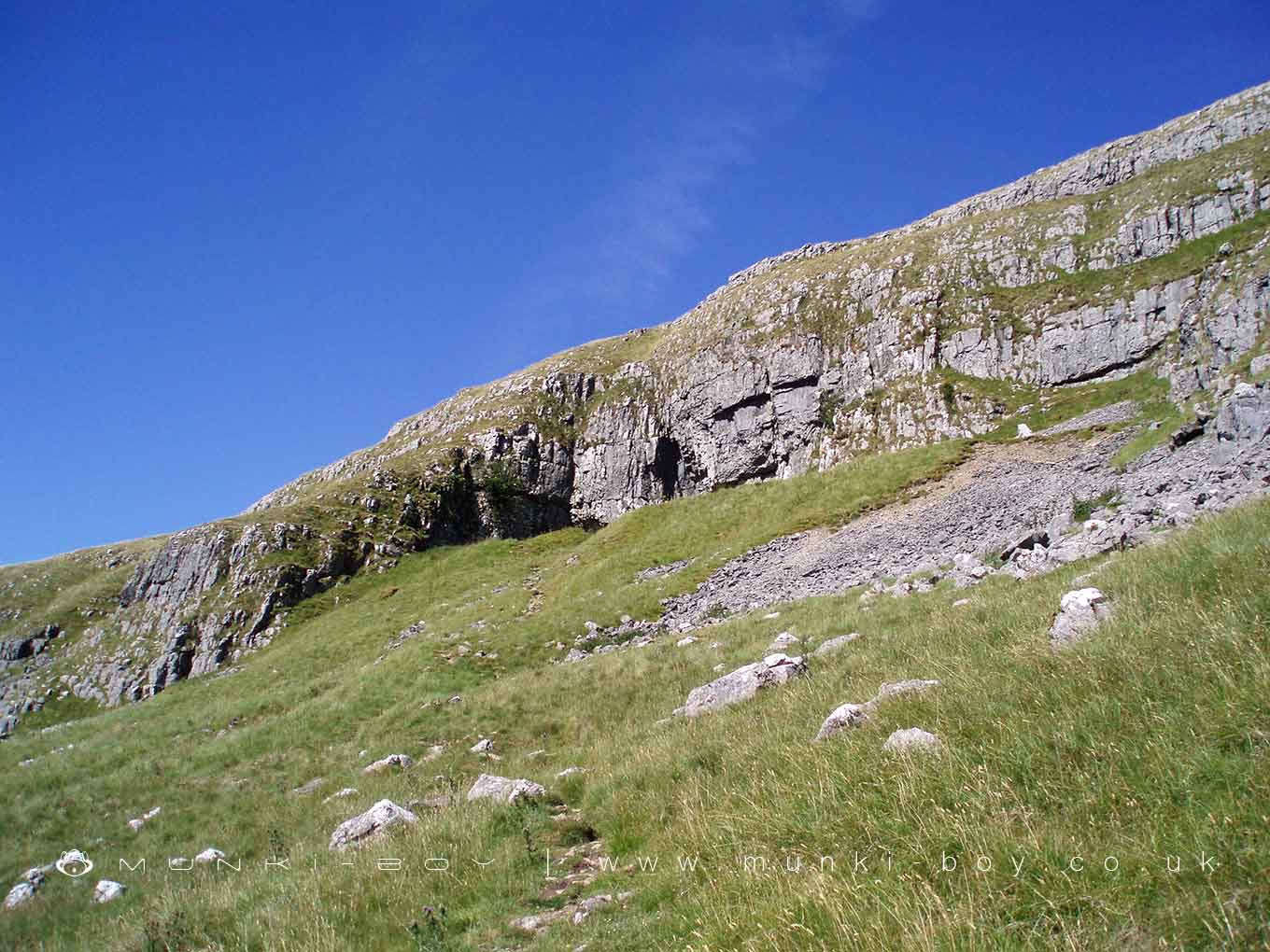
Victoria Cave
Victoria Cave lies approximately 30m up the east side of King’s Scar, a lateral valley of the River Ribble near Settle.
Victoria Cave a large solution cave formed within a more extensive limestone rift system. The cave consists of three interconnecting chambers with access to the outside via two entrances. A fissure exists about 10m further north and is considered to be part of the same cave system.
Excavations have taken place both inside and outside Victoria Cave in the 19th and 20th centuries. These have produced a small but diverse collection of Late Upper Palaeolithic artefacts including flint tools and a rare example of decorated antlerwork. A harpoon previously identified as Palaeolithic is now believed to be of Mesolithic age. There is also a very rich faunal sequence from the cave dating back 100,000 years into the last Interglacial but, so far, there is no archaeological evidence from this early period.
Archaeological excavations have been responsible for partial removal of deposits inside the main entrance and the area just outside the cave mouth. The main entrance measures about 30m wide and 10m high while the main interior chamber extends for a distance of about 50m. Although the deposits in these places have been greatly reduced, significant portions remain for future investigation. These include deposits of the chambers covered by plastic matting and rocks, sediments within the cave protected by natural roof fall, the entrance platform outside both entrances and intact areas on either side of the cave mouth. The scheduling therefore includes the cave and side fissure and the deposits which extend out onto the platform and talus outside the entrances in an arc of 30m.


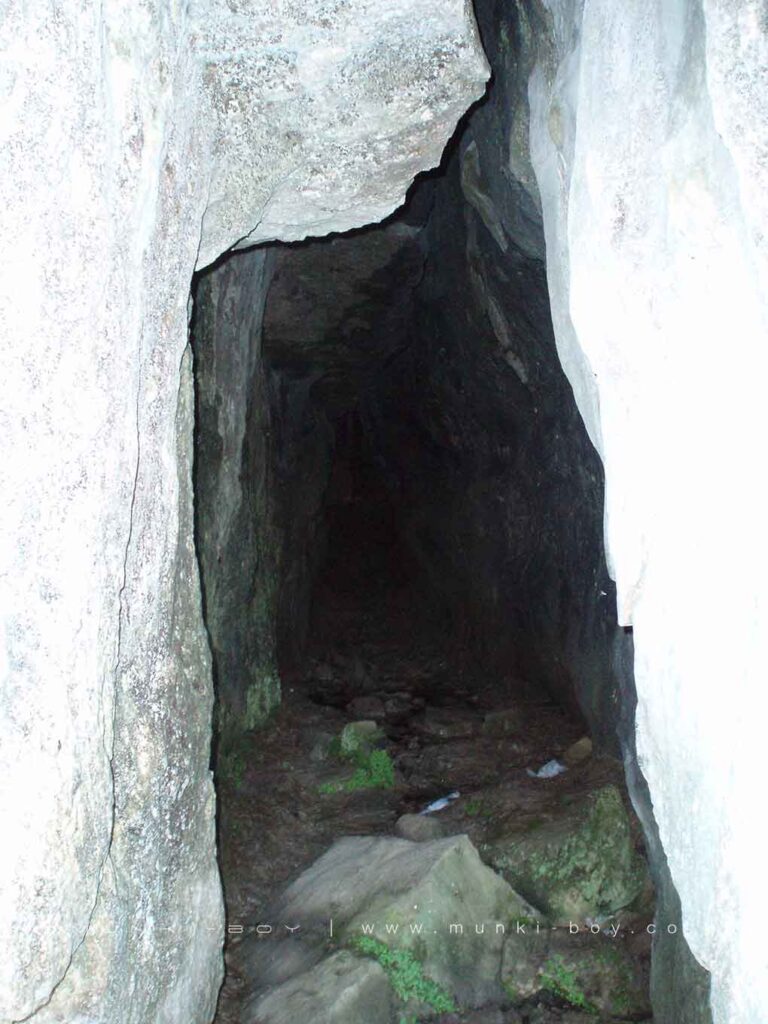
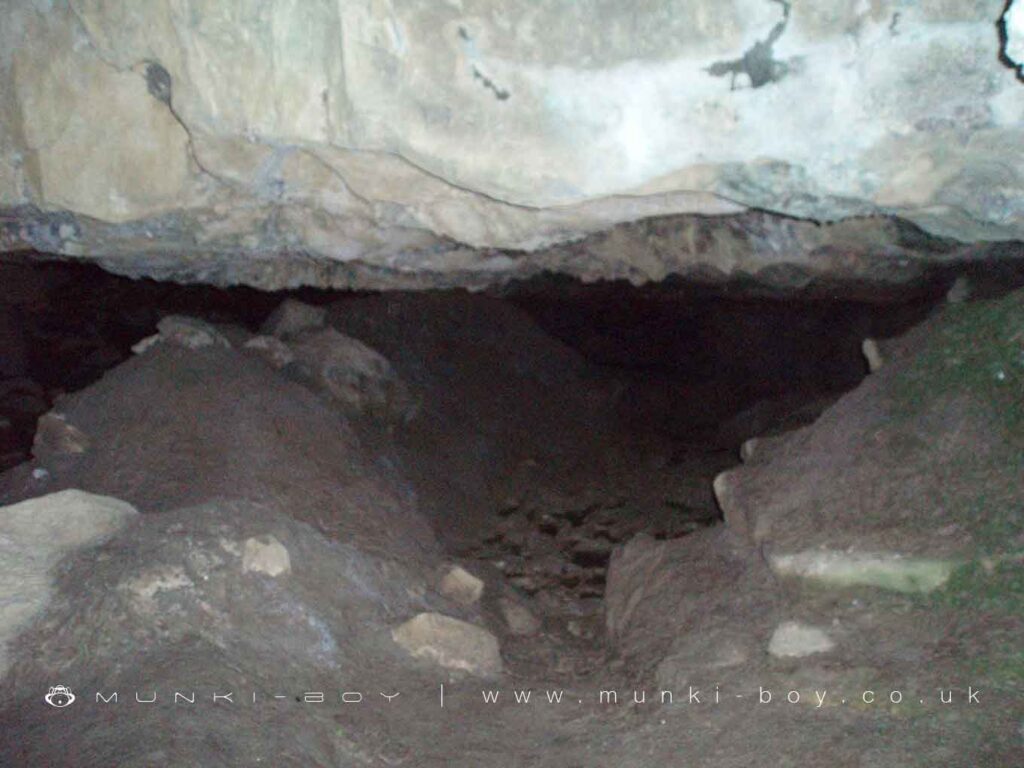

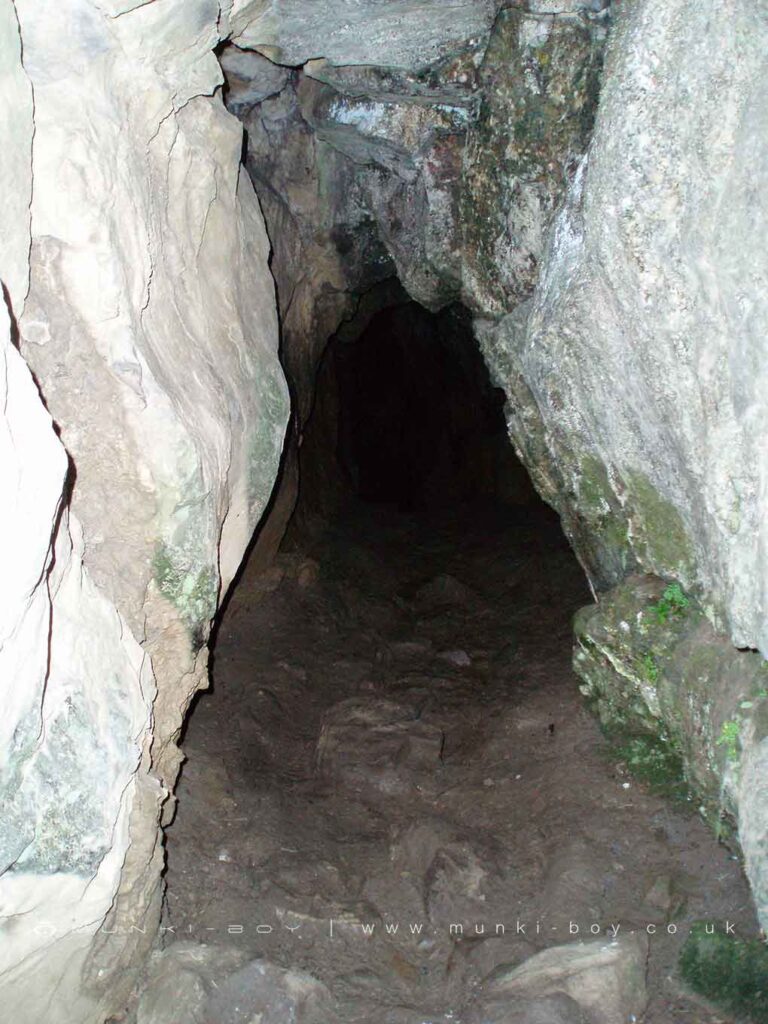


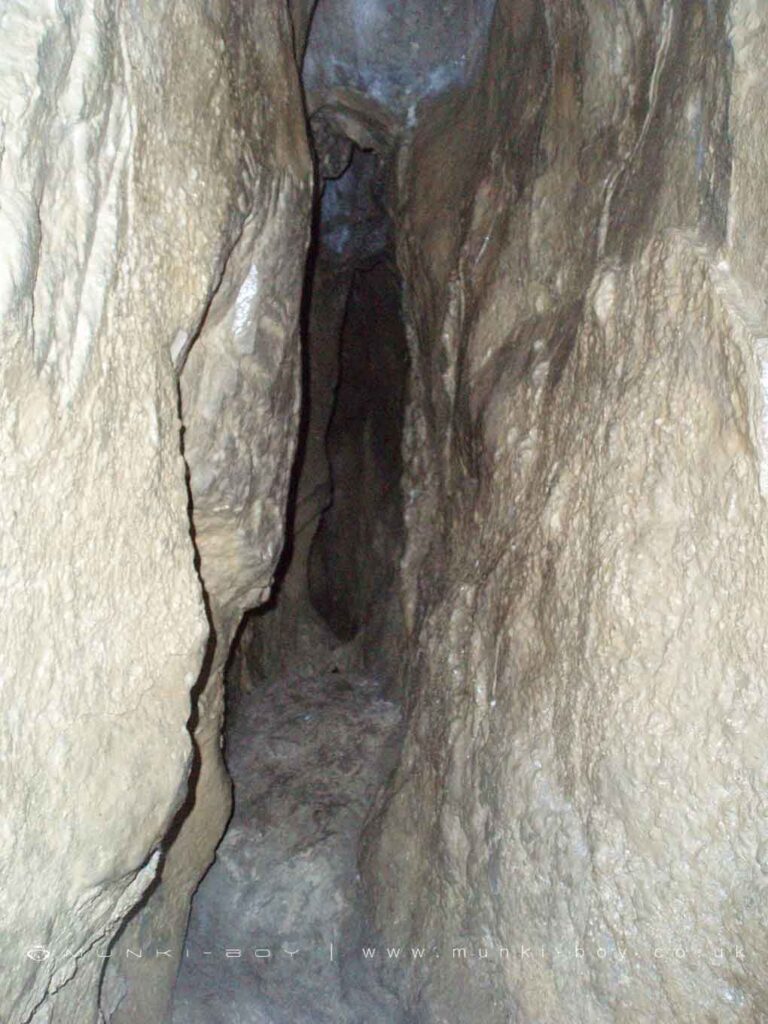

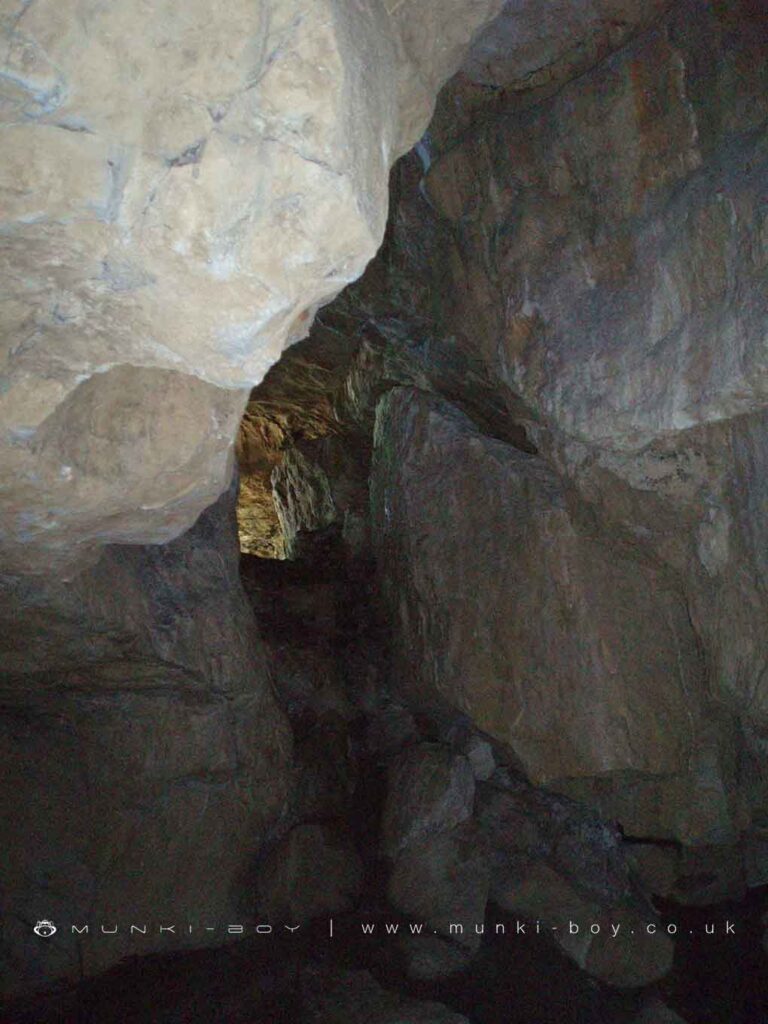
Local History
Historic monuments near Victoria Cave
